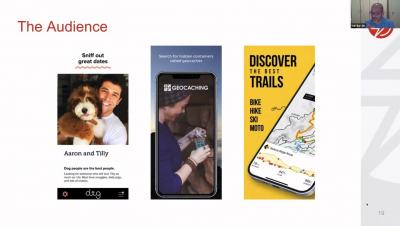Systems | Development | Analytics | API | Testing
November 2021
Testing APIs is Every Bit Important as Testing the UI
What I see too often though is folks running multiple UI tests in an attempt to validate specific output values or logic. A much easier way to accomplish this task is to run specific API tests on the business logic of the software. Why should we do this? It’s much faster and easier to write these tests. We can have our developers supporting this process and not just Selenium or automation experts. 'Work smarter, not harder' is a theory we should all be familiar with.
10 Things Testers Wish CIOs and CTOs Knew About Testing: Episode 5
Selenium is a Terrific Automation Framework, but it's Not a Strategy
Here at Sauce Labs, we love Selenium. It was created by our co-founder Jason Huggins, so it will always have a soft spot in our hearts. But the truth is, if we are being technical, Selenium is more of a robotic browser control mechanism than a true test automation framework. While Selenium can definitely be part of your test automation strategy, the use of it in itself would not qualify as a proper testing strategy.
Modern Software Needs Modern Testing: The Test Toolchain, AI, and Risk-Based Thinking
How to Test and Delivery Secure Mobile Apps in the New Era of Finance
Test Automation Code Quality
Introduction to Sauce Labs
Why Security Quality Matters - And What You Should Do About It
10 Things Testers Wish CIOs and CTOs Knew About Testing: Episode 4
Getting Started With Sauce Labs Low-Code Automated Web Testing
The software industry is transforming rapidly due to new changes brought on by artificial intelligence (AI) and machine learning (ML). AI & ML have democratized many aspects of the software testing process helping businesses, small and large, save time and money. As AI bridges the technical gap required in many jobs, more people will be able to add tremendous value to development teams — without the need of a computer science degree.
Sauce Labs and Qualitest for Mobile Test Automation
Low-Code Automated Web Testing Offered by Sauce Labs
10 Things Testers Wish CIOs & CTOs Knew About Testing: Test Automation Should Not Be Used to Replace Humans
In my 18 years of working in quality engineering and the testing community, I’ve developed some best practices to help organizations create and manage their overall test strategies. This is the second in a 10-week series on what testers wish their CIOs and CTOs knew about testing. Each week, I’ll share my experience to help educate tech leaders on key priorities their testing teams need them to understand.
10 Things Testers Wish CIOs and CTOs Knew About Testing: Episode 3
Growing a Culture of Quality - CTM Online
Sauce Labs API Testing and Monitoring Demo Video
10 Things Testers Wish CIOs & CTOs Knew About Testing: The Goal of Testing is Risk Mitigation, Not Perfect Software
In a perfect world, our dev teams would write flawless code and never make a single mistake (though I suppose I might be out of a job then.) The truth of the matter is software never is perfect. Mistakes, like Thanos, are inevitable. Moreover, testers shouldn’t be attempting to make the software perfect, just mitigate risk by protecting revenue and the customer experience. When we consider the overall customer experience this becomes easier to understand.
10 Things Testers Wish CIOs & CTOs Knew About Testing: A Tester's Job is to Model and Advocate for Great User Experiences
In my 18 years of working in quality engineering and the testing community, I’ve developed some best practices to help organizations create and manage their overall test strategies. This is the first in a 10-week series on what testers wish their CIOs and CTOs knew about testing. Each week, I’ll share my experience to help educate tech leaders on key priorities their testing teams need them to understand. This week, we’ll talk about the user experience.
















